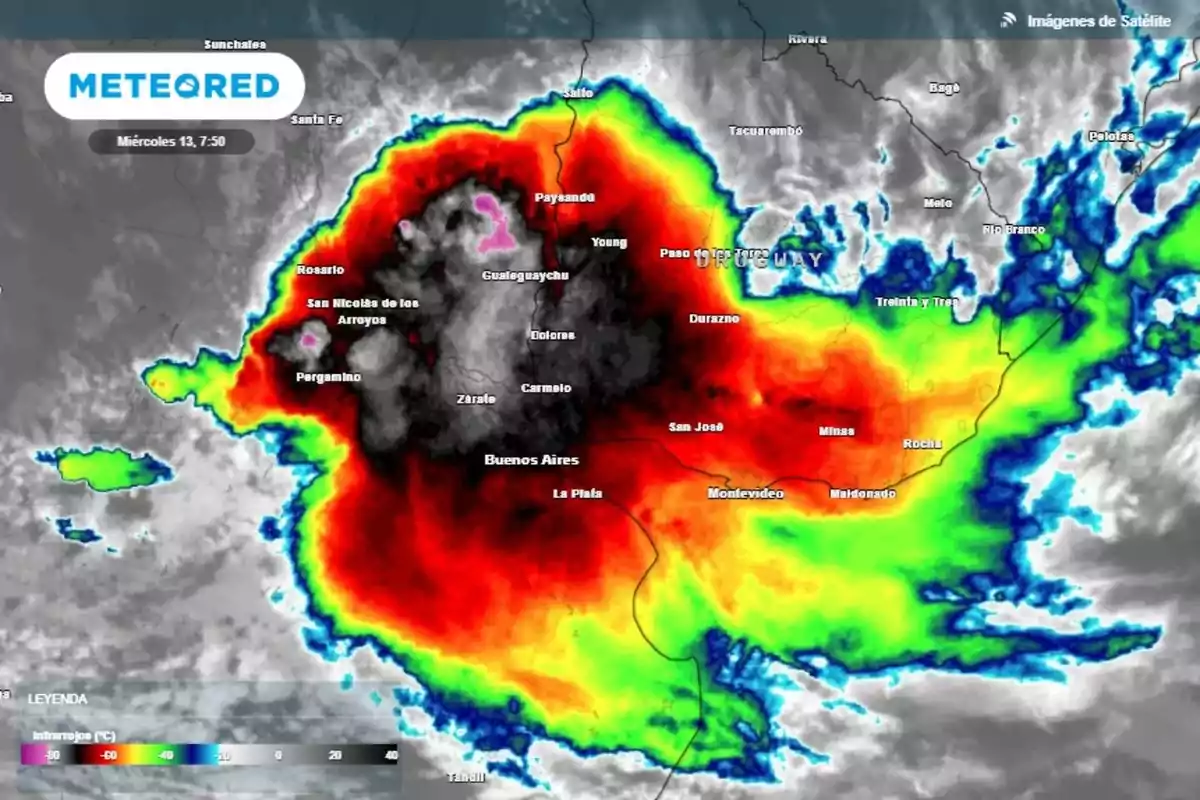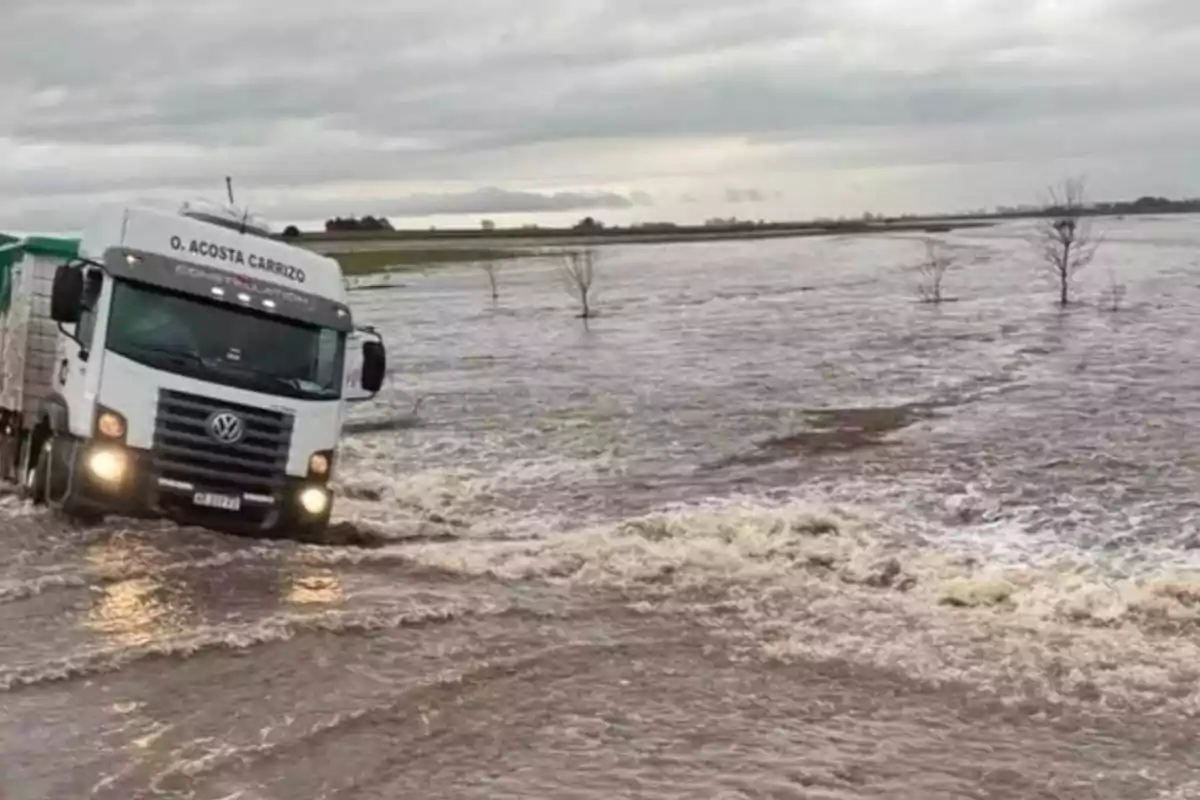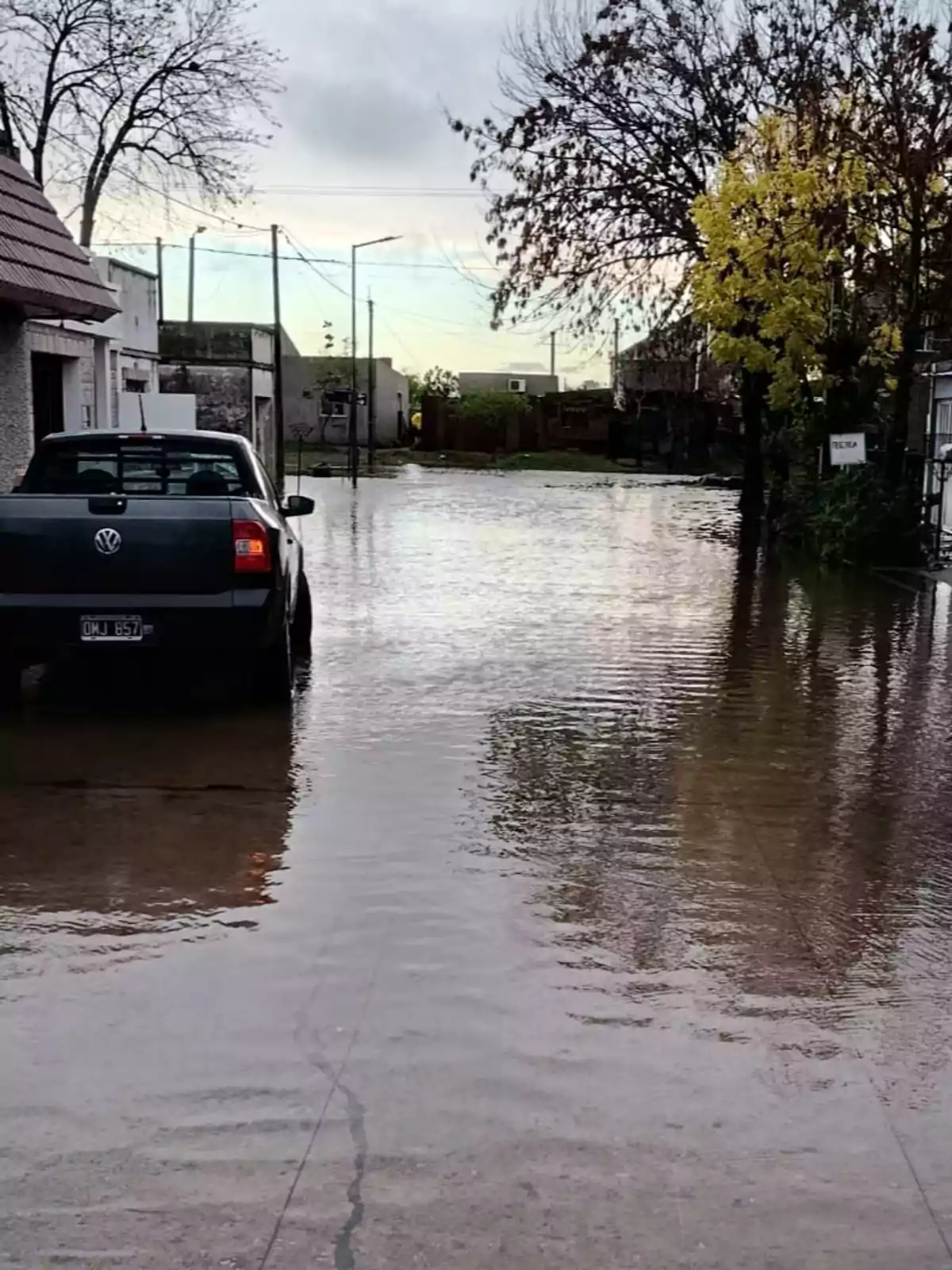
How the weather forecast will continue in Buenos Aires and why the red alert is in effect
The province of Buenos Aires is experiencing one of the most severe storms in recent years, which will continue for 2 days
The National Meteorological Service (SMN) keeps a red alert for severe storms affecting a large part of the Buenos Aires territory. The phenomenon, which intensified since early Friday morning, has already caused floods, road closures, and hundreds of evacuations. The accumulated rainfall exceeded 300 millimeters in some areas, a volume three times higher than expected, and the rain is expected to continue at least until the early hours of Sunday, May 18.
The maximum alert is especially in effect in the northwest of the Buenos Aires province, where the impact of the storm was devastating. Cities like Zárate, Chivilcoy, 9 de Julio, Suipacha, Bragado, and Chacabuco are among the most affected by the overflow of streams and the saturation of the drainage system. The situation led authorities to close access to several national routes, including sections of routes 8, 9, and 6, due to water accumulation and reduced visibility.
"Stay where you are: don't go out". With that message, the mayor of Zárate, Marcelo Matzkin, summarized the severity of the scenario. Images circulating on social media and in the media showed streets turned into rivers, cars swept away by the current, and families evacuated amid mud and water. In that locality, the water covered avenues, knocked down power poles, and completely blocked traffic on the main accesses, including a four-meter-high viaduct that was submerged.

In the Buenos Aires Metropolitan Area (AMBA), the situation also caused complications. In districts like Merlo, Tigre, Ituzaingó, Lanús, and La Matanza, severe flooding, affected homes, and power outages were reported. On social media, hundreds of residents shared videos showing avenues completely covered by water, while emergency brigades tried to assist those affected.
The Federal Emergency Agency deployed a containment operation with personnel from the Naval Prefecture, Federal Police, and National Highway. Additionally, an Incident Command was established in La Matanza, from where the provincial government coordinates the response to the emergency. The Buenos Aires Security Minister, Javier Alonso, is in constant contact with the affected municipalities and Governor Axel Kicillof.
Meanwhile, National Highway recommended avoiding travel on national routes 8 and 9, due to the risk posed by water accumulation and low visibility. The short-term weather advisory was renewed on Saturday morning and will remain active for districts in the center and north of the province.

What to expect in the coming hours?
The SMN forecasts that the rain will continue throughout the rest of Saturday, with temporary improvements. Conditions are expected to begin stabilizing only during the early hours of Sunday, although isolated showers will persist. It is not ruled out that new intense storms may affect the region again.
In light of this scenario, authorities insist on the need to follow official recommendations, avoid unnecessary travel, and stay informed through the official channels of the SMN, Civil Defense, and local governments.
Which areas are under red, orange, and yellow alerts?
According to the latest report from the National Meteorological Service, the red alert for strong storms is mainly in effect in the northwest of Buenos Aires, including the districts of Zárate, Suipacha, Chivilcoy, 9 de Julio, Chacabuco, Bragado, Alberti, and 25 de Mayo, where intense rain with accumulations well above normal is expected to continue.
Meanwhile, the orange alert covers areas in the center of the province like Navarro, Roque Pérez, Las Flores, General Belgrano, Lobos, and Saladillo, with the possibility of strong storms, hail, and gusts.
Meanwhile, the yellow alert affects the Metropolitan Area and surroundings, including La Matanza, Tigre, Merlo, Ituzaingó, Avellaneda, and Lanús, where rainfall may be locally intense, but with less risk to the population if necessary precautions are taken.
More posts: